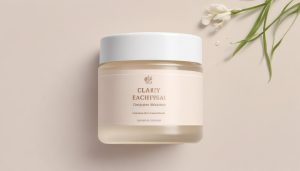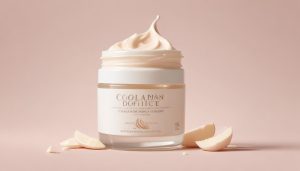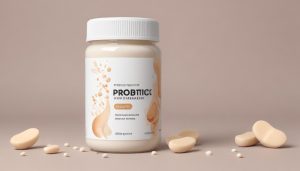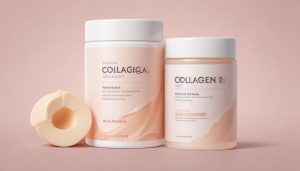Secrets You May Have Missed About Skin Barrier Health
Natalie Brooks August 22, 2025
Skin barrier health is getting lots of attention—but what’s truly essential for lasting results? Dive into expert-backed insights on restoring and protecting this vital defense layer, modern trending ingredients, and easy habits that make a big difference. Explore what your skin tries to tell you, and see why this topic is sparking buzz.
The Skin Barrier Explained and Why People Care
The skin barrier has become one of wellness and beauty’s most-discussed topics. It’s far more than a trending phrase—this protective layer determines how resilient, radiant, and comfortable skin feels every day. Consisting primarily of lipids, proteins, and corneocytes, the barrier keeps vital moisture in and blocks out irritants. Many search for ways to strengthen this layer, especially given rising concerns around environmental stressors and harsh ingredients. Popular searches, such as ‘ceramides for skin barrier’ and ‘how to repair moisture barrier,’ reflect widespread interest in fortifying the skin against modern challenges. Dermatologists consistently highlight the skin barrier as fundamental, underpinning nearly every skincare recommendation.
Much of the recent excitement around skin barrier health is rooted in real consumer experiences. Individuals often notice tightness, flakiness, or sudden sensitivity and wonder if their barrier needs restoring. Many factors, including over-exfoliation, pollution, or seasonal changes, can compromise this vital function. Once disrupted, problems such as redness and itchiness appear more frequently. Data reveals that people who focus on a gentle, balanced skincare routine—one free from excessive scrubs or alcohol-based toners—may see improvements in barrier strength. The search for ‘how to fix damaged barrier’ now rivals more classic beauty questions as a result. This shows how wellness and practical daily steps are converging in popular beauty discussions.
Experts are especially interested in how emerging ingredients and technologies can support skin barrier repair. Peptides, ceramides, and niacinamide have become central to modern routines. But education remains key. Many individuals report making their skin worse before discovering which ingredients their particular barrier needs. This reflects the importance of evidence-based information and expert resources—like those from research universities and dermatologist associations—when choosing products or starting a new routine. Barrier health is an evolving field, making it a fascinating area for ongoing self-care and peer discussion. For those curious about science-backed, lasting beauty, understanding this topic is a must. (https://www.aad.org/public/everyday-care/skin-care-basics/dry/repair-damaged-skin-barrier)
Proven Ingredients That Support a Healthy Skin Barrier
Restoring the moisture barrier naturally starts with ingredient awareness. Ceramides frequently appear on ingredient labels and are backed by robust scientific research. These naturally occurring lipids act as glue between skin cells, preventing water loss and protecting against aggressive environments. Niacinamide, also known as vitamin B3, is another standout: it soothes visible redness and improves barrier strength over time. The demand for ‘niacinamide cream’ and similar searches has grown rapidly as consumers seek science-driven choices. Fatty acids, humectants like glycerin, and gentle antioxidant blends also play important roles. Each supports the barrier, but only when matched to unique skin needs and lifestyles.
Clinical experts note that certain synthetic or overly harsh components can hinder progress. Alcohol-laden toners, abrasive scrubs, or high concentrations of certain acids may strip away essential lipids. Instead, mild, fragrance-free formulations are increasingly recommended for sensitive or barrier-compromised skin. Squalane—a naturally derived emollient—has surged in popularity as a barrier-friendly lightweight oil. Extensive testing and peer-reviewed studies have shown that squalane, alongside ceramides, can substantially reduce moisture loss in a matter of weeks when used regularly. Layering these strengthening ingredients into a simple routine often delivers the most consistent improvements, underscoring that less may truly be more for barrier care.
Additionally, new research into microbiome-friendly skincare has changed how brands and users think about the barrier. By supporting the skin’s natural bacteria, many hope to create an ecosystem where the barrier can heal itself efficiently. Prebiotics, probiotics, and minimalistic gentle cleansers are now discussed alongside ceramides and hyaluronic acid. The best approach? Seek out formulations from reputable sources, and consider references from dermatologist-led organizations. A two-step or three-step regimen with proven active ingredients still stands as the preferred approach for anyone starting a barrier repair journey.https://www.ncbi.nlm.nih.gov/pmc/articles/PMC6791135/
Common Signs the Barrier Needs Help
Recognizing when your skin barrier needs support is important for wellness and comfort. Classic signs include persistent dryness, newfound sensitivity, and patches of flaking or roughness. Sometimes, burning or stinging upon product application means the barrier is trying to send a warning. Some people notice breakouts or an increase in redness after experimenting with new ingredients. Dermatologist-led resources affirm that healthy skin often feels smooth, with minimal sensation after cleansing and moisturizing. Understanding these signs can help avoid misdiagnosis, ensuring individuals don’t blame unrelated lifestyle factors for what’s often a solvable skin issue. Early attention, rather than drastic measures, is usually what brings relief.
There are also subtle cues that are easy to miss. Skin that looks dull, loses its ‘bounce,’ or suddenly reacts to lotions it once loved often signals barrier compromise. Even increased oiliness can be a telltale sign, as some people’s skin overcompensates for moisture loss by increasing sebum production. Those following popular ingredient trends such as retinol or exfoliating acids sometimes encounter these challenges—leading to the rise of searches like ‘how to repair barrier after acids.’ Wellness experts stress the value of observing how skin changes across different environments and seasons. These small shifts provide valuable clues before issues escalate into more stubborn conditions.
Poor sleep, chronic stress, and unprotected sun exposure can all impact the moisture barrier. Medical research connects disrupted sleep cycles to impaired repair, making a holistic approach important. This linkage has led to renewed interest in practices like sleep hygiene, gentle routines, and consistent sunscreen use. By connecting these lifestyle habits to visible outcomes, individuals gain a deeper incentive to take a proactive role in skin health. Looking beyond skincare products toward daily routines, self-care, and sun protection allows the barrier to gradually rebuild its natural resilience. (https://www.health.harvard.edu/staying-healthy/the-skin-microbiome)
Building an Effective Modern Routine
The most effective skin barrier routines are tailored to individual needs but share core principles: consistency, simplicity, and a focus on barrier-friendly ingredients. Start with a gentle, non-stripping cleanser, ideally free from harsh foaming agents. Many turn to creamy or oil-based cleansers, which help maintain natural lipid balance while removing dirt and sunscreens. Follow this with a replenishing moisturizer rich in ceramides or niacinamide, and always use a broad-spectrum sunscreen daily. These steps represent the essential pillars that experts recommend for barrier protection. However, these foundations can be complemented with serums or oils when extra comfort or repair is needed.
Weekly exfoliation may still benefit some skin types, but overuse is a common source of barrier issues. The modern trend leans toward chemical exfoliants—such as lactic acid or polyhydroxy acids—that offer gentle resurfacing without physical abrasion. Always monitor skin response, as signs of irritation warrant an immediate break from active ingredients. Building in periodic ‘skin fasting,’ where only minimal products are used for a week, can allow the barrier to naturally recover and recalibrate. This practice has its roots in both traditional and scientific beauty philosophies and can make a notable impact for those experiencing recurring barrier symptoms.
Supplements and nutrition are increasingly considered part of a comprehensive beauty approach. Antioxidants like vitamin E and omega-3 fatty acids found in food support barrier health from within. Those searching for ‘diet and skin barrier’ often discover the value of a balanced, nutrient-rich diet for both resilience and radiance. The right products paired with nutrition, sleep hygiene, and managed stress create a sustainable path toward long-term skin comfort. This holistic focus is reinforced by leading skincare foundations and associations—guiding consumers to combine well-researched actives with real-life lifestyle strategies for the best results.https://www.skinhealthinstitute.org.au/page/29/skincare-myths
Trends, Myths, and What Actually Works
The rising attention on skin barrier preservation has sparked both helpful trends and persistent myths. Micellar waters, barrier creams with ceramides, and supportive sleep routines are practical developments gaining scientific endorsement. However, some myths linger—like the belief that ‘more is better’ when using exfoliating acids or that oil-free products are always safest for recovery. Experts urge caution in adopting new products based purely on social media advice, advocating for reputable, science-based guidance and professional consults when in doubt.
It’s also important to question popular shortcuts or unproven remedies. While some home treatments, like oatmeal masks, can soothe the skin for select users, others—including undiluted essential oils or baking soda scrubs—often risk greater irritation. Keyword surges around ‘DIY barrier repair’ suggest a need for fact-checked, accessible education. Trusted non-profit health organizations emphasize the risks of using harsh, unverified treatments on delicate or already-impaired skin. Verified trends, like using a humidifier in dry climates or choosing mineral sunscreens, offer genuine, barrier-friendly benefits when practiced regularly.
Ultimately, the most reliable approach rests on simplicity, mindfulness, and informed care. Skin is dynamic, evolving with age, environment, and lifestyle. Those who seek out reputable resources—dermatological associations, peer-reviewed studies, and consumer-friendly guides—find the greatest long-term success. Decision-making built on data, not just hype or trends, transforms daily routines into meaningful acts of self-care. Anyone interested in radiant, healthy skin has much to gain from focusing on the often-overlooked barrier.https://www.ncbi.nlm.nih.gov/pmc/articles/PMC7318396/
How to Find Resources and Learn More About Barrier Health
The field of skin barrier research grows every year, with new studies and consumer-focused resources emerging frequently. Organizations such as the American Academy of Dermatology and the British Association of Dermatologists provide educational materials and free guides on ingredient safety, skincare habits, and signs of barrier disruption. Many universities also publish open-access research articles, helping everyday readers find trustworthy, practical recommendations. Exploring platforms with dermatologist Q&A sections gives users nuanced support tailored to their concerns.
Government and nonprofit health sites make a wealth of skin barrier knowledge publicly accessible. For individuals seeking hands-on exploration, user-friendly symptom checkers and scientific explainers are widely available online. The growth of telehealth dermatology has also opened paths to professional advice for skin concerns, regardless of location. Key topics like ‘barrier function,’ ‘microbiome-support,’ or ‘non-irritating skincare’ lead to expert-backed search results. Referencing ongoing research ensures an approach based on both present needs and future innovation.
Active learning—through workshops, science-based newsletters, or evidence-informed wellness forums—helps separate fact from fiction. It’s now easier than ever to connect with dermatologist-reviewed platforms and respected journals. Anyone searching for lasting change will benefit from resources with demonstrated accuracy and transparency. Cultivating a curious, well-informed mindset allows users to respond to their skin’s needs more confidently, leading to healthier barrier function and, ultimately, greater overall wellbeing.https://www.bad.org.uk/for-the-public/skin-barrier/
References
1. American Academy of Dermatology. (2023). How to repair a damaged skin barrier. Retrieved from https://www.aad.org/public/everyday-care/skin-care-basics/dry/repair-damaged-skin-barrier
2. British Association of Dermatologists. (2023). The skin barrier. Retrieved from https://www.bad.org.uk/for-the-public/skin-barrier/
3. Harvard Health Publishing. (2022). The skin microbiome. Retrieved from https://www.health.harvard.edu/staying-healthy/the-skin-microbiome
4. Skin Health Institute. (2023). Common skincare myths debunked. Retrieved from https://www.skinhealthinstitute.org.au/page/29/skincare-myths
5. Draelos, Z. D. (2018). The science behind skin barrier creams. International Journal of Cosmetic Science. Retrieved from https://www.ncbi.nlm.nih.gov/pmc/articles/PMC6791135/
6. Litchman, G., & Rigel, D. (2020). Advances in understanding skin barrier function. Dermatology Research and Practice. Retrieved from https://www.ncbi.nlm.nih.gov/pmc/articles/PMC7318396/







